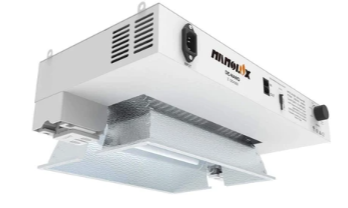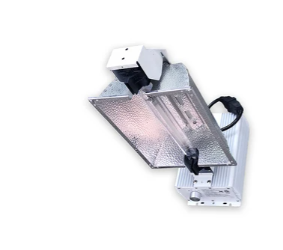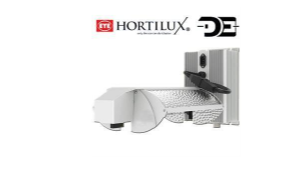HPS Grow Lights: Which Brands Are Best? - 2021 Guide for Beginners
HPS (High Pressure Sodium) grow light is high-intensity luminosity that is emitted when electrical current passes through a narrow arc tube consisting of Xenon and a mixture of mercury and sodium vapor.
HPS technology plays a vital role in cultivating indoor crops today. It involves HPS bulbs that come in different shapes and sizes. They commonly get turned on via a pulse start. Note that the light spectrum of the HPS bulbs varies widely between different manufacturers and different lamps alike.
High Pressure Sodium grow lights, or Best HPS Grow Lights, are the golden standard in growing cannabis. HPS lights can be used for the entire cannabis grow from seed to harvest (though some growers like to start with Metal Halide or florescent grow lights before the cannabis hits the flowering stage). HPS grow lights also seem to help growers produce the best cannabis yields. However, HPS lights use a lot of energy and produce a lot of heat. These issues can prevent a beginning grower from deciding to use HPS grow lights.
WHY CHOOSE AN HPS GROW LIGHT?
HPS bulbs create a more red light when ignited, and so is a popular choice for influencing bloom and supporting plants through productive growth phases. This allows you to provide the exact wavelengths needed for these stages- and when used in conjunction with both a ballast and reflector, you can control the intensity through dimmer switches. Plus, you can keep your light concentrated in the area you want it in, rather than losing light and energy through dissipation into the surrounding space.
HPS bulbs produce a very intense light, which is extremely beneficial to the bloom stages of your plants. If you are dependent upon the production of your plants for harvest reasons, these are bulbs worth considering to maximize your overall crop yield.
The Pros and Cons of using HPS Grow Lights
Advantages
HPS grow lights are energy efficient. They have a higher PAR efficiency than fluorescent lights
The cost per output wattage is averagely less than other types of grow lights.
HPS bulbs are more affordable than LED lights.
Their color wavelengths are ideal for the flowering and budding stage of plants.
Disadvantages
HPS grow lights lack the blue color spectrum which is important for the plants’ vegetative stages.
The light can produce damaging heat which can burn plants. So an appropriate distance and cooling methods are needed.
The bulbs contain mercury and need to be disposed of appropriately. You can’t throw them in the trash can
HPS bulbs require a ballast to get powered and a reflector to improve focus.
NanoLux 1000W HPS Double Ended OG Grow Light
Pros
Comes as a full set.
Easy to install.
Energy-efficient bulb.
Adjustable brightness.
Proper light distribution.
Lightweight construction.
Cons
Covers a small area.
ECO Farm 1000W Double Ended HPS HID Grow Light Enclosed Kit
Pros
Long-lasting quality.
High performance.
Great value for money.
Bright, consistent lighting.
Cons
Tends to get hot quickly.
Emperor Lighting DE 1000W Grow Light Kit
Pros
Has a mechanical timer.
Hanging accessories included.
Optimized spectrum.
HPS and MH bulbs.
High-quality construction.
Cons
The ballast is a little noisy.
The Coverage
First things first; you should consider the coverage that the HPS grow light will deliver. There are a total of five HPS light sizes, and each one offers different amounts of light coverage. The sizes and coverage areas are as follows.
150 watts: 2 inches by 2 inches of coverage; should be placed 7 inches from plants
250 watts: 2 inches by 2 inches to 2.5 inches by 2.5 inches of coverage; should be placed 12 inches from plants
400 watts: 3 inches by 3 inches to 3.5 inches by 3.5 inches of coverage; should be placed 12 inches from plants
600 watts:5 inches by 3.5 inches to 4 inches by 4 inches of coverage; should be placed 16 inches from plants
1000 watts: 4 inches by 4 inches to 5 inches by 5 inches of coverage; should be placed 21 inches from plants
To determine what size HPS grow light you’ll need, consider the size of the space that you’ll be using it in.
The Ballasts
In order for an HPS grow light to work, it must feature a built-in ballast. There are different types of ballasts. A digital ballast is one of the most common options, as it’s compatible with most bulbs, tends to run relatively cool, generates a high intensity of light, and is more energy efficient, as it uses the least amount of electricity.
The best digital ballasts features a wide range of dimming capability, bulb protection, and shielding from radio frequency. It also will also be flexible to allow for different wattage usage.
The Reflectors
A reflector is very important for an HPS grow light, as it encourages the focus of the light, while also extending the life of the bulbs. Typically, there are two main types of reflectors available:
Open. Open reflectors are constructed in a way so that plants will receive as much light as possible. They’re also outfitted with an adjustable feature that allows you to situate the light close to or far from your plants while still ensuring that they will receive the best possible spectrum and heat.
Air cooled. This type of reflector is designed to capture hot air so that it won’t reach the plants; or, an air cooled reflector can be hooked up to an air duct exhaust. If you’re going to be growing your plants in an enclosed place, such as a grow tent, an air cooled reflector would be a good choice.
Single- or Double-Ended Bulbs
Next, you should consider whether single-ended or double-ended bulbs will best suit your needs.
Single-ended HPS grow lights. These types of grow lights look similar to a standard incandescent bulb, with the primary difference being that they feature a larger socket (known as a Mogul-base socket). On the interior of a glass tube is a component that’s referred to as an arc tube, the primary focus of which is to generate light. The energy is generated from the base of the bulb, which is connected to a metal frame wire on one end.
Double-ended HPS grow lights. A double-ended grow light is even more similar to a fluorescent tube light bulb. Like the name suggests, double-ended lights feature two wires on both ends of the bulb, which can be fastened into the sockets of the light fixture. Double-ended HPS grow lights have become increasingly popular in recent years.
Construction
It’s also very important to consider the construction of the HPS grow light. While all HPS lights are made of metal, you want to choose one that is made of high-grade, durable metal that will be able to withstand excessive heat and regular wear and tear.
If the metal is too thin or flimsy, the light will end up breaking down quickly, or worse, it could end up being hazardous. Hammered German aluminum is considered the most durable materials for an HPS grow light.
Heat Dispersion
You’ll also want to consider the heat dispersion of the HPS grow light. This type of technology is made to mimic the sun, so it stands to reason that the lights generate a great deal of heat. That’s why heat dispersion is important.
Make sure that the HPS grow light that you choose is designed to properly disperse the heat the light generates, not only so that your plants will receive the heat that they need, but also to ensure safety.
The Cost
As you can see from our list, HPS grow lights vary widely in price, so you want to be sure that you consider how much you want to spend before you start shopping. There are several factors that will impact the cost of an HPS light; the construction, the size, the power, and the features, for example.
Final thoughts
If you are new to, or an old hand at, indoor plant grows, and are looking to support your vegetation in the best way possible- it never hurts to keep up with the products that are on the current market. High-Pressure Sodium Lights, or HPS, are a tried and true bulb that has been used for well over 100 years to help support and promote reproductive stages of plant growth.


